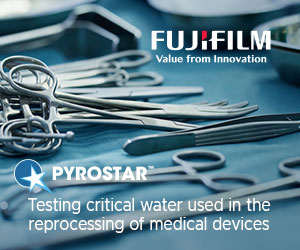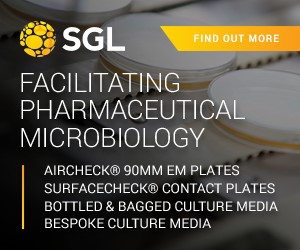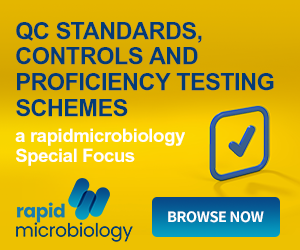Reduce False Negs wi...
High-Throughput MALD...
28th April 2015 Content supplied by: Bruker Daltonics Inc.
Rapid ID of >2,200 Microorganisms Directly from Positive Blood Culture
At the 25th European Congress of Clinical Microbiology and Infectious Diseases (ECCMID), Bruker announced the introduction of the new IVD MALDI SepsityperTM kit and workflow with standard operating procedures for the rapid identification of microorganisms from positive blood culture bottles. The IVD kit is now labeled according to the European IVD directive EC/98/79, and is developed for use with the IVD MALDI Biotyper (IVD MBT) system for rapid MALDI-TOF mass spectrometry-based microbial identification.
The IVD MALDI Sepsityper kit enables a rapid and easy isolation and identification of microorganisms within minutes from positive blood culture bottles. Harvested microorganisms are processed and then identified using the IVD MALDI Biotyper. The identification assay from positive blood cultures is applicable to Gram-negative and Gram-positive bacteria, as well as to yeast. The IVD MALDI Biotyper reference library covers more than 2,000 different bacteria species and approximately 200 species of yeasts, including candida. This workflow is recommended and optimized for blood culture bottles without any charcoal supplements.
Overall, the IVD MALDI Sepsityper workflow takes approximately 30 minutes after gram-staining and extraction from a positive blood culture bottle to identification. It saves the day normally required for additional agar plate culturing, and it can also save an additional 8-12 hours, when compared to traditional biochemical identification after agar plate culturing.
The IVD MALDI Sepsityper workflow reduces the turnaround time provided by traditional workflows by typically 24 to 36 hours after a blood culture bottle becomes positive. The faster results provided by the IVD MALDI Sepsityper workflow aid the clinician in the management of blood stream infections. These earlier identification results, combined with antibiotic stewardship programs, can reduce healthcare costs substantially, and can improve patient outcomes, while also assisting in the fight against antibiotic resistance via reductions in the use of ineffective or expensive antibiotics. In contrast to pure nucleic acid amplification test (NAATs), blood cultures do not amplify biologically non-active DNA or cells, but only the most active and relevant microbial species. Moreover, the IVD MALDI Sepsityper workflow is untargeted and offers very broad microbial coverage of gram-negative and gram-positive bacterial species, as well as clinically relevant yeast species, including candida.
Dr. Cassie Pope, Consultant Clinical Scientist from St. George’s Hospital in London, UK, said: “The introduction of the BrukerMALDI Sepsityper kit into our workflow has proved to be a decision that we are very pleased with, and that has resulted in clear benefits to the laboratory and our users. We implemented it for the identification of organisms in all blood cultures that have flagged as positive in the morning. This has reduced our time to identification by 24 hours, and allows us to provide a better service, and promotes timely prescription of appropriate narrow spectrum antimicrobials. This is valued by clinicians and they are now used to the improved service and earlier identification information. Our scientific staff enjoys using the kit, as it is easy to perform and provides identifications that they have confidence in, typically within 30 minutes.”
Dr. Nils Morgenthaler, Vice President for Medical Affairs for the Bruker Daltonics Division, added: “We and our collaborators now have several years of experience with the research-use-only (RUO) MALDI Sepsityper workflow, and the feedback from our customers and collaborators has been very positive. So far, 21 peer reviewed scientific publications have evaluated this approach, in which the RUO MALDI Sepsityper workflow has been shown to provide approximately 80% correct identification at the species level, with the remaining 20% mostly unidentified, and with essentially no relevant misidentifications at the genus level. With further recent improvements and expansion in the IVD MALDI Biotyper reference library, this already excellent identification performance directly from blood culture is expected to improve even further. The recent CE-labeling of the kit underlines Bruker´s strategy to provide more and more workflows for clinical routine use on the IVD MALDI Biotyper platform. We believe that the IVD MALDI Sepsityper kit and workflow has the potential to rapidly become the new gold standard in microorganism identification in clinical microbiology directly out of positive blood cultures, due to its very short TTR and broad bacteria and yeast species coverage.”
Tags:
Date Published: 28th April 2015
Source article link: View
Reduce False Negs with Heipha
High-Throughput MALDI Biotypersmart System with






